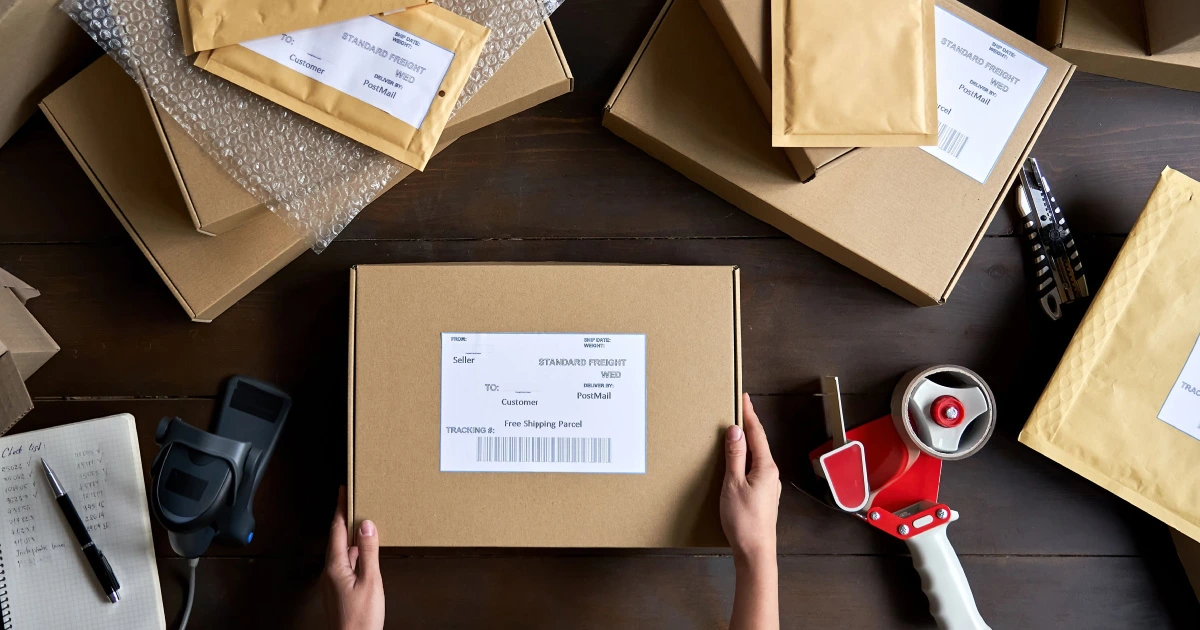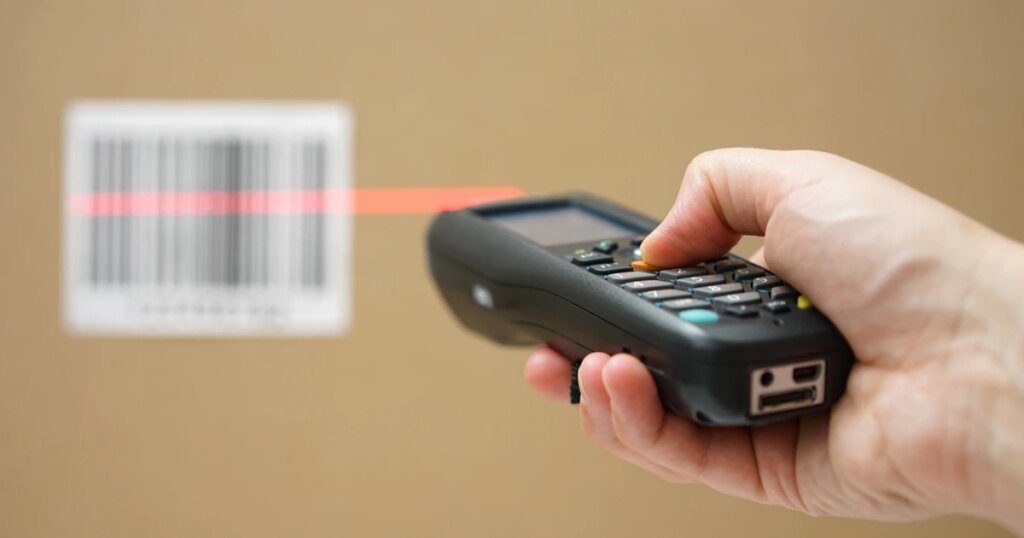
All About Amazon Barcodes: UPCs, FNSKUs, EANs, and More

Table of Contents
Amazon barcodes are one of those Amazon seller topics that aren’t as complicated as they seem. They fall into the category of boring admin stuff that nobody wants to deal with (I fell asleep a couple of times while writing this), but you have to slog through this if you want to send FBA shipments to Amazon.
We’re going to help demystify this yawn fest by answering some common questions. After reading, you’ll be ready to tackle the Amazon barcode process.
Questions you might have:
- What are Amazon barcodes?
- What are GTINs (UPCs, EANs, ISBNs, etc.)
- How and where do I buy my barcodes?
- What is an FNSKU barcode and do I need one?
- What is commingling?
- Private label barcode best practices?
Let’s dive in.
What are Amazon barcodes and why do I need them?
First things first.
To clear up the confusion: Amazon barcodes are NOT the same as ASINs. ASINs (Amazon Standard Identification Numbers) are unique to product listings. That string of digits that shows in the web address when you go to a product page? That’s the ASIN. It’s the same no matter how many sellers are piggybacking on that listing.
With that out of the way, Amazon barcodes are different from ASINs. We’re talking about the barcodes affixed on each unit of product that Amazon fulfillment centers scan to receive, store, pick, and pack your items. It’s how they track your item’s journey through the warehouse or Amazon fulfillment center.

You need them because Amazon says you need them.
Any product fulfilled by Amazon needs to have some kind of barcode. Otherwise, there’s no way for Amazon to track the product. We’ll talk about the different kinds of barcodes that Amazon accepts below.
Amazon barcodes, by the way, do NOT apply to Fulfilled by Merchant (FBM) sellers. As an FBM seller, you’re sending your orders directly from yourself to a customer, so it technically never passes through Amazon’s hands. In this situation, there’s no need for an Amazon barcode.
When we’re talking about Amazon barcodes, by the way, we’re mainly talking FNSKUs.
What’s an FNSKU and why do I need to care?
Fulfillment Network Stock Keeping Units (FNSKUs) are Amazon’s unique barcodes assigned to your product and linked to your seller account. Any time you add a new product listing to your inventory in Seller Central, set it to FBA, and choose Amazon barcode (instead of manufacturer barcode), Amazon generates an FNSKU for you. This is what’s printed on your barcodes.
This also ensures that, even if you and another seller are selling the same item, the inventory you send to Amazon will be designated to you, and theirs to them. If you don’t do this, your inventory will be commingled (aka a messy nightmare) – see more on that further down, under the section about commingling.
Now, you can forego FNSKUs entirely and simply use the manufacturer’s barcode that already appears on a product. For example, suppose you’re a wholesaler who orders a shipment from your supplier, or an arbitrage seller and you buy a Paw Patrol stuffed animal from Target while it’s on clearance. In that case, those products already have a manufacturer barcode on them.
How do I print (and apply) my Amazon barcode labels?
There are a few approaches you can do: either you print them from Amazon, or if you’re a private label seller, you or your manufacturer can print them directly onto the packaging (assuming that product or version of the packaging will only be sold on Amazon).
When you create a shipping plan (also known as sending a shipment to FBA; the option appears as ‘replenish FBA inventory’ in Seller Central), you can print Amazon barcodes/labels at the ‘print barcode labels’ step. You can choose the format of the label sheet to be printed.

Whether your barcodes are just generic Amazon barcodes or FNSKUs, you need to use them to completely cover any existing barcodes on the product packaging, whether a box, a hang tag, or anything in between.
These Amazon barcode requirements have a reason: any other barcodes Amazon picks up while scanning your item at their fulfillment center will confuse the system and delay or deny your product being received into inventory.

If you’re really lazy and just don’t want to affix the barcode labels yourself (or you forgot to before sending your shipment to Amazon), you CAN pay to have Amazon do it for you at the fulfillment center. At a $0.30/item fee, that may not sound like a lot by itself, but over several products that fee will add up VERY quickly.
It’s recommended to just do it yourself (or have your manufacturer or 3PL do it).
What about UPCs, EANs, and other GTINs?
We’re not going to dive into the meanings of each digit in each GTIN format, but we’ll briefly outline GTINs and their types.
Global Trade Item Number – or GTIN – is the umbrella category for UPCs, EANs, and the like. This identifies your product, and part of that number string will show up in your UPC or EAN.
Unique Product Code – or UPC – is the type of GTIN typically used in the US and Canada.
European Article Number – or EAN – is the type of GTIN typically used in – you guessed it – the European Union and elsewhere that isn’t the US or Canada.
Note that the above is ‘typical’ use. There are always exceptions, but that’s your general rule of thumb.
These are all separate from Amazon’s barcodes. These are the ‘manufacturer barcodes’ we’ve mentioned.
(By the way, in certain cases you can apply to be exempted from requiring a GTIN. See the Amazon GTIN exemption page).
So where do I get UPCs?
If you’re a wholesaler or arbitrage seller, the products you’re selling already have manufacturer barcodes on them, so you just need to worry about affixing the Amazon barcode label on top of them.
If you’re a private label seller, however, you have to purchase your own manufacturer barcodes (to use as an Amazon UPC code or EAN code), especially if you want to use them in Brand Registry and have full control over your brand (control which includes helping prevent listing hijackers from trying to take over your listing and product).
Once you purchase your UPCs (or EANs), you can associate them with each of your products. For example, if you’re a private label seller with a skincare line of three products – a moisturizer, a cleanser, and a toner – you would need three UPCs – one for each of those products. Were you to, say, release a second type of moisturizer, that would require a new fourth UPC.
UPCs are purchased and stored in a global database for future reference. A quick search online will bring up dozens of results for where to purchase your UPCs.
However!
The ONLY legitimate global producer of UPCs is GS1.
See how to obtain a legitimate GS1 UPC, EAN, or other GTIN on their site.
Purchasing UPCs/EANs from any other site (typically at a discount) may end up being the equivalent of trying to buy discounted jailbroken iPhones on Craigslist, only to find the back of the phone engraved with a picture of a pear and the text “iFone,” and the software populated with apps like “iMassage” and “FaceThyme.”

The reason for this is these sites are essentially resellers. They purchase old barcodes in bulk and resell them, meaning it’s like buying a used car, cash, with no Carfax; you’re taking a gamble on if it’s been run to the ground or even if it has a clean or salvage title.
Even if the product that was previously linked to that barcode is out of print, someone could still be selling it somewhere on the internet. I’ve personally encountered this problem before when I was trying to list Sharper Image products at a previous job. I encountered that dreaded 5665 error where Amazon insisted the UPC did not match the product info I was entering, even though (to my knowledge) it did.
Does that mean my company had therefore bought used UPCs? Who knows. That’s not my problem anymore, but I don’t want this to be your problem, too.
Wait, what’s commingling?
It’s the devil, basically. (Well, in my unbiased opinion it is).
Commingling is what happens if you don’t generate FNSKUs. Were you to just send your FBA shipment to Amazon without affixing an FNSKU label, Amazon would use the manufacturer barcode to scan and catalog your products.
Since the manufacturer barcode (whether a UPC, ISBN, or something else) would correspond to the product itself and not to your seller account, Amazon will then toss your product into a communal ‘pool’ of that same product sent in by yourself AND other Amazon sellers selling the same product without FNSKUs.
Therefore, any time someone orders that product (known as a commingled product), Amazon will pick one unit of that product (regardless of which seller sent it in), and ship it to the customer.

This situation particularly applies to wholesale and retail/online arbitrage sellers, since you aren’t producing your product yourself, and others will likely be selling them, too.
For example, let’s say you’re Seller A and another seller is Seller B, and both of you are selling Product Z by retail arbitrage.
Seller A (you) sends in 10 units of Product Z.
Seller B (competitor) sends in 10 units of Product Z.
Customer places an order for Product Z while you have the buy box.
You win the sale, and your in-stock quantity is now 9 units of Product Z.
However, when Amazon goes to fulfill your order, there’s a 50/50 chance the unit they pick and pack will actually be a product you sent in. There’s also a 50/50 chance the unit they pick is one that your competitor sent in.
In a perfect world, there wouldn’t be an issue since all Product Z units are in perfect condition.
However, this isn’t the case. What if your 10 units of Product Z were in perfect condition, but some of Seller B’s units weren’t?
A customer therefore can receive a defective unit that wasn’t your fault to begin with but will count against your metrics.
See why it’s a headache?
Theoretically, it’s just not worth the trouble. While this isn’t an issue private label sellers should have to face, wholesale and arbitrage sellers should be mindful of this when considering bypassing using FNSKUs!
But on the flip side, if you’re a seller who’s had a positive experience with commingling inventory, let us know! We’d like to hear your side.
Start stickering
If you’re an Amazon private label seller looking to obtain a GTIN (UPC, EAN, etc.), head over to the GS1 website and get the process started.
If you’re a wholesaler or arbitrage seller, again we highly recommend getting FNSKUs on all your products just to avoid the stickerless/commingled product nightmare.
This is one of those topics that’s easier to understand at the start of your selling career, so that you have your barcodes all squared away from the beginning, rather than having to wade through miles of red tape down the line and try to fix sloppily-implemented products later.
Anyway, go forth and barcode!
Frequently Asked Questions
Achieve More Results in Less Time
Accelerate the Growth of Your Business, Brand or Agency
Maximize your results and drive success faster with Helium 10’s full suite of Amazon and Walmart solutions.

